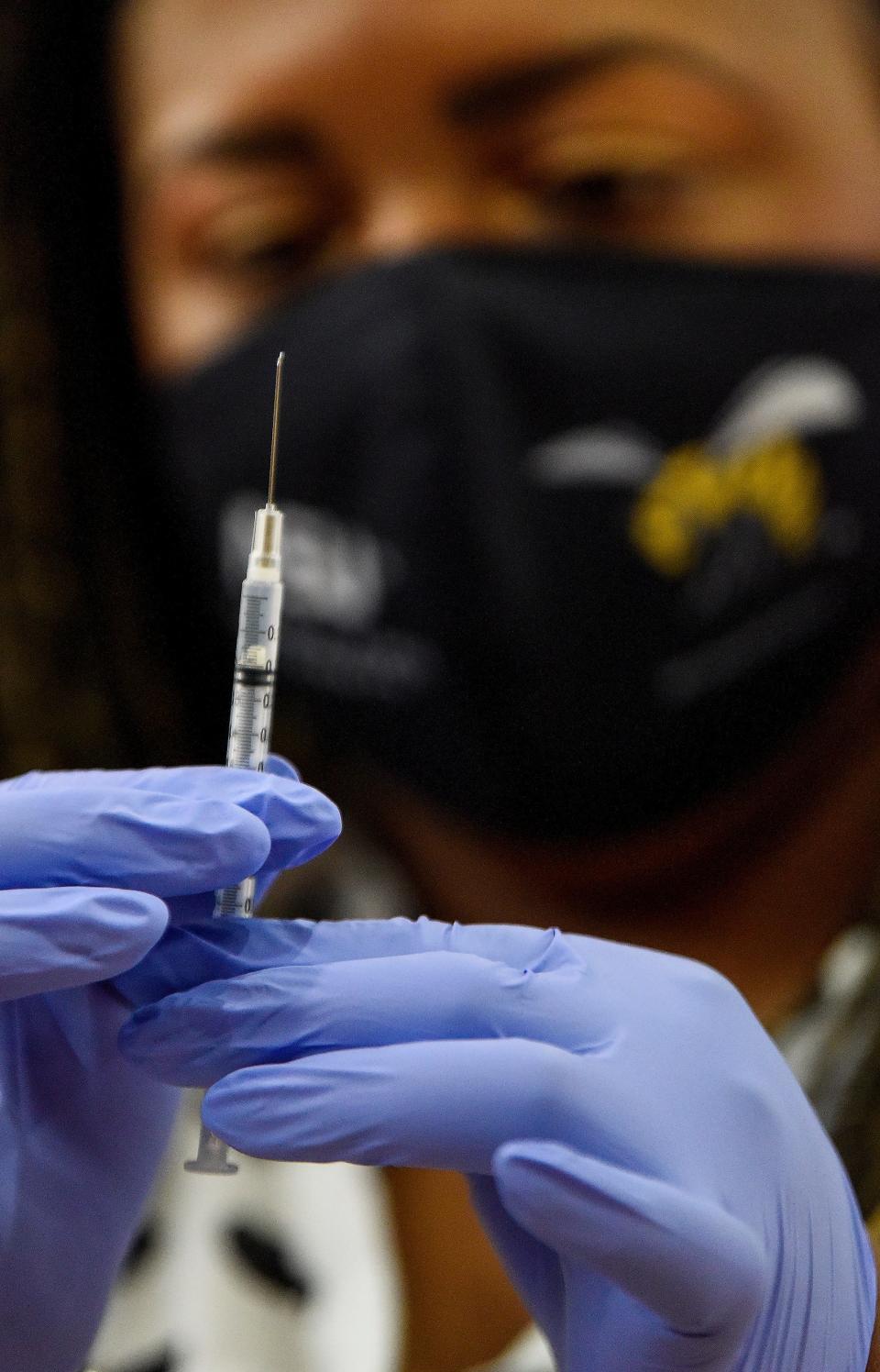COVID legacy: More deaths than births in Alabama
- Oops!Something went wrong.Please try again later.
Almost three years after health officials confirmed the first COVID-19 case in Alabama, more people are dying in the state than being born.
The 2022 numbers aren’t finalized, but Dr. Scott Harris, the State Health Officer, estimated Thursday that there were about 4,000 more deaths than births last year. That was smaller than the estimated 10,000 more deaths than births in Alabama in 2021. But prior to the outbreak, and as long as records had been kept, births exceeded deaths in Alabama.
It’s an ongoing effect of the pandemic, Harris said during a wide-ranging assessment of the state’s response to COVID-19 on Thursday morning at the Alabama Department of Public Health board meeting in Montgomery. Harris said the state had grappled with personnel and supply shortages, and a federal response that often clashed with individual state plans.
“We have 51 different COVID plans,” Harris said. “That meant you can get vaccinated in Georgia this week, but you had to wait two weeks to get vaccinated with Alabama.”
The state is doing “okay” today, Harris said. Fewer people are being tested, and undercounting cases remains a problem in the state and the nation. But since the Delta variant ebbed after its outbreak in 2021, COVID-19 has been less dangerous for most people. Immunocompromised people remain at risk of getting sick with COVID-19 or remaining sick for a longer period.
Hospital admissions have declined, and Harris said that the health care system has a “manageable” load now. But there is a low uptake of the updated booster vaccines. Harris urged his audience to get the updated vaccine if they hadn’t already.
Struggles with staffing
Alabama recorded its first COVID-19 case on March 13, 2020. Since then, the state has seen more than 1.6 million cases and over 20,000 deaths. In September 2021, Alabama had the highest rate of deaths from COVID in the nation. The outbreak strained hospital systems that were already struggling with nursing shortages.
Going into 2021, The expected shortage of nurses was approximately 200,000 nationwide, said James Hardin, president of the Alabama State Nurses Association. The widespread need affected Alabama’s ability to keep nurses in the state.
“You become a competitor with other states to keep nurses,” he said.
Staffing issues persist, said Harding, because Medicare reimbursements are so low in the state.

And Alabama ranks at the bottom for Medicare reimbursement rates, which make up a large share of hospital’s revenue, “by a good bit,” said Danne Howard, deputy director of the Alabama Hospital Association.
The low reimbursement rates only worsened nursing shortages in the state, Hardin said. States with higher reimbursement rates can pass that money on to their staff, so someone who lives near a border state may be able to get better pay.
“For us to attract those people to come back, we have to match those salaries or more,” Harding said. “But we don’t have the same reimbursement.”
A supply-chain problem across the country also deeply affected the department’s response to the pandemic. It made it difficult to get medical supplies, such as personal protective equipment (PPE). Harris said this led to competition among states for these supplies, and sometimes against other health organizations in Alabama. This competition further raised prices for these goods.
Alabama has a troubled history when it comes to providing healthcare for its Black residents. That led to mistrust toward the medical system among Black communities. Harris said the department worked with local officials, health care providers and organizations to address this problem. He said that they are proud that the Black Belt counties are seven of the top ten most vaccinated counties in Alabama.
“We felt like we had a lot of success,” he said.
But the state had trouble reaching other rural areas, and specifically young white males. Harris said they tried the same strategy, but that didn’t work. Even targeting football games and partnering with NASCAR was only “mildly successful.”
The lack of knowledge around the virus and the abundance of misinformation was another challenge the department faced, Harris said. Expert opinion didn’t matter as much.
“People don’t want to hear from experts, they want to hear from people in their tribe, that they agree with,” he said. “And that’s really a lot of noise for us to try to get through.”
Alabama Reflector is part of States Newsroom, an independent nonprofit website covering politics and policy in state capitals around the nation.
This article originally appeared on Montgomery Advertiser: COVID legacy: More deaths than births in Alabama

